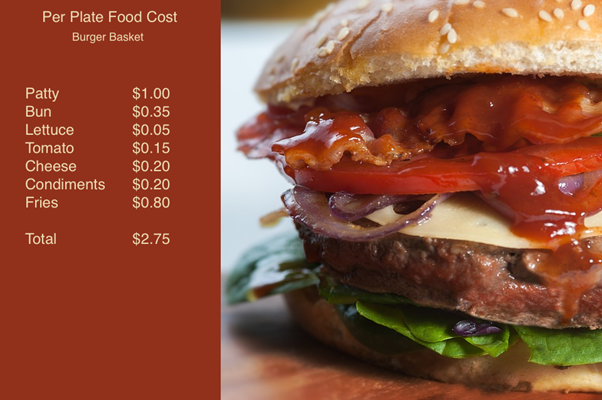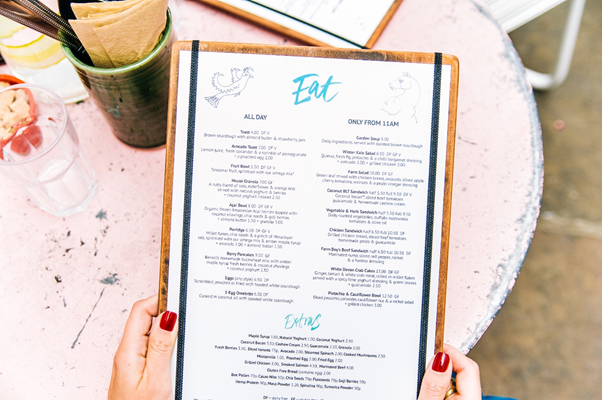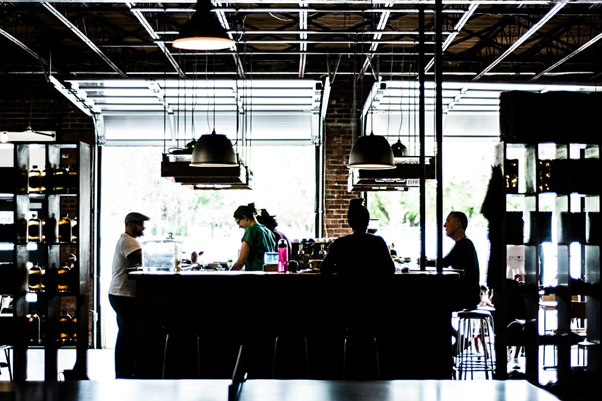
Effective restaurant management balances many different targets and processes to create a seamless operation. Food and labour costs, inventory tracking, staff training, food production, customer service, and marketing are part of daily restaurant management. Here’s a look at how to manage a restaurant in six steps, along with tips and advice from experienced restaurateurs.
What Does Restaurant Management Look Like?
Restaurant management tasks naturally fall into two main categories; managing the overall health of the business and directing daily operations. The first three steps on this list – knowing costs, adjusting to meet targets, and forecasting for growth – fall under the first category. The final three – maintaining operational standards, building a positive staff culture, and focusing on customer service – are part of directing daily operations.
These steps are not listed in order of importance; building a positive staff culture is as important to a successful operation as figuring food costs. It is helpful to consider them like spokes on the same wheel. A high – performing restaurant needs to be strong in all areas to stay on track.
Let’s start with the part that restaurant managers may find tricky: the math.
1. Know Your Restaurant’s Operating Costs
Several things eat into a restaurant operating budget. Managing a restaurant of any size begins with knowing these operational costs and expenses and the ways they influence your business. Costs, in particular, show the health of a restaurant more accurately than any other measure. Knowing how to figure these numbers is important, and it doesn’t need to be difficult. To begin, it is important to know the difference between expenses and costs.
What Are Restaurant Expenses?
Expenses are payments that don’t fluctuate and must be paid regularly. Business and liquor licenses are expenses. Rent and utilities are too. These numbers are important to know as they may affect your long term decision making, but your ability to control them daily is limited. Most of your expenses are the result of deals that were made at the launch of the restaurant or are negotiated and renewed annually.
What Are Restaurant Costs?Costs fluctuate wildly, which means they are controllable. The money spent on supplies like wine, beer, food, and to – go containers makes up your cost of goods sold (COGS). Labour is another controllable cost that is separate from COGS. Some restaurants choose to track their labour in the dining room, or front of house (FOH), and kitchen, or back of house (BOH), separately. This allows greater potential to pinpoint where the most impactful adjustments can be made. Balancing Restaurant Expenses & CostsExpenses and COGS are where any restaurant spends its money. A restaurant manager can impact expenses by negotiating a flat rate for monthly utility payments, shopping around for the most competitive rates on necessary insurance policies, or buying used equipment rather than leasing it. The guts of restaurant management, however, are figuring the fluctuating costs every day and developing strategies to spend less than what the restaurant generates in revenue continuously. The two biggest costs are COGS and labour. Let’s look at labour first. |

Restaurant math is like a two-plate carry – difficult at first, but you soon get the hang of it |
Labour Cost
Labour cost is not just the wages that are paid to hourly staff. Labour cost includes salaries paid to full-time employees like chefs and managers as well as overtime, sick pay, vacation pay, payroll taxes, bonuses, and benefits packages. Labour cost, like all costs associated with the management of a restaurant, is most easily expressed as a percentage of total sales. For example, across the restaurant industry, a daily labour cost of 21% to 25% is considered excellent.
Figuring Labour Cost
The simplest way to figure labour cost is to tally the total wages paid and divide that number by the total sales. Depending on what you hope to learn, you can shift the timeframe from one day to a week, month, or year.
For example, if you want to know if the new clock – in times you rolled out on the last schedule have had an impact, you want to know the labour cost for the previous week. To assess the general health of the business, a monthlong range might be more useful. Just be sure that you are using wage and sales numbers from the same timeframe before you plug them into the formula:
(Total wages / Total sales) x 100 = Labour cost percentage
Labour cost can be figured manually. The wage figures you need will generally be in the payroll processing reports that your payroll processor provides along with your payroll checks. The sales numbers can be pulled for the same period from your cash register sales reports. Nothing makes labour costing simpler, however, than using a high–functioning POS that acts as both your register and your time clock.
A well-integrated point-of-sale (POS) system will have your sales and labour figures in one place and allow you to edit your parameters to tailor a report to produce only the information you want. According to a National Restaurant Association (NRA) report, about 20% of restaurants in the United States currently operate without a POS. If your restaurant is among this 20%, getting a POS will be the single biggest change you can make to increase your operational efficiency.
Most restaurants will look at their overall labour costs as well as separate the front of house labour from the back of house labour in their daily reporting. This allows a manager reviewing the labour cost data to see trends emerging in the business and find opportunities to adjust the operation that lower labour costs.
There are more complex methods for figuring different kinds of labour cost. When forecasting for the year ahead, figuring a labour cost by labour hour is helpful. If your restaurant operation is underperforming and you need a more detailed picture of where each dollar is going, figuring labour as a percentage of total operating costs is ideal. If you don’t have the appetite for more involved math, software solutions can integrate with your POS and pull together higher-level numbers for you.
Food Cost
There are two types of food cost to keep in mind: Per plate food cost, and overall food cost. Restaurant managers should know how to figure both as each number is useful in different settings. Per plate food cost is the best foundation to set your menu pricing. Overall food cost gives you a more accurate idea of your overall profit margins.
Figuring per – Plate Food Cost

Figuring per plate food cost is basic arithmetic |
The simplest way to figure food cost is by calculating the cost per plate. For small restaurants that primarily sell a single item, like tacos or burgers, per plate food cost can give a pretty full picture of profitability. To figure per plate food cost, you should:
If your food cost target is 25%, then you know the menu price for this gourmet burger and fries should be $11, which is determined by the following method: (Plate cost x 100) / Target food cost = Menu price |
In this case:
($2.75 x 100) / 25 = $11.00
If all this restaurant sells are burger baskets, and they are priced with the target food cost in mind, a restaurant manager can feel secure that, under normal operating conditions, costs will be in line. They can forecast the number of orders on hand easily based on the inventory as well as spot waste or theft issues.
For example, If the restaurant has $275 of inventory on hand, they should be able to make 100 orders of this burger. If the inventory runs out after 65 orders, the manager knows immediately that something is not operating correctly. It could be spoiled product or lack of portion control in the kitchen.
Many restaurants have more than one item on the menu, however, and the cost per plate can vary wildly between a filet mignon entree and a grilled artichoke appetizer. Figuring the food cost of the overall operation can provide a bigger picture.
Figuring Overall Food CostJust like figuring the food cost per plate, figuring overall food cost begins with the COGS. To get the most useful number here, be sure to subtract any comps or food spillage from the total food sales before figuring the overall food cost percentage. (COGS / Total food sales) x 100 = Overall food cost percentage For example, if in the course of a month, a restaurant spent $3,000 on food, sold $14,000, and had $1,500 in comps and food spillage, the total food cost for that period would look like this:
Without the $1,500 in comps and spillage, the food cost is 21%. Some comps and spillage are inevitable. Sending a complimentary appetizer to a guest who has waited a long time for their entree is good customer service. It is wise to use comps sparingly, however. If there is a customer service issue that is frequently being smoothed over by comps, that is usually a sign that the management team needs to improve the operation in that area. |

A restaurant manager should be able to figure total food cost as a percentage of sales on a daily basis |

Monitoring your beverage cost separately from overall food cost can help identify opportunities to cut costs |
Don’t Forget Beverage CostsThe same basic formula is used to determine beverage costs. To get the most detailed picture of your operation, it is a good idea to separate your beverage COGS and sales by liquor, wine, beer, and non – alcoholic beverages. Figuring each of these overall costs separately will show you where your operation has the greatest opportunities to improve. To ensure that your costing is accurate in a larger operation, it is important to note on your invoices what category the items you have purchased will be used for. Lime juice, for example, would be a food cost if it is purchased as an ingredient in guacamole. If it is used to make margaritas, however, it becomes a liquor cost. Categorizing products as they arrive will save hours of frustration when figuring food and beverage costs at the end of the month, and help you know where to make adjustments. |
2. Adjust Your Operation to Meet Targets
Daily operational targets for labour cost and food cost usually come from owners and managers creating a forecast of expected sales. Every restaurant is different, so you may determine that your individual targets are different. These numbers are, essentially, what percentage of your total revenue can you afford to spend on supplies and labour and still turn a profit.
Some industry-wide guidelines provide a good place to start.
- Food cost: Between 21% and 30%
- Labour cost: Between 25% and 30%
- Prime costs (food cost + labour cost): 55% and 60%
- Expenses: 30%
When considering how to control costs and meet your targets, one of the all- time best things you can do to control costs is to increase sales. Cohen sums it up this way: “Sales fix all sin.”
Increasing sales can be broken into small steps. Sometimes it is as simple as training your order-taking staff to suggest specific, additional menu items to customers. In a full- service restaurant, a strategy that often works is challenging your server team to add a course like an appetizer or dessert to their orders during a shift. If your team is invested in the challenge, you should see your sales begin to rise. A modern POS can allow managers to add upselling prompts right at the point of sale.
Ways to Control Labour Cost
Suppose your food costs are in line, but your labour costs are consistently off target. On the flip side, your labour standards are solid, but your food cost is through the roof. There are some specific steps a restaurant manager can take to have an impact on labour cost or food cost, specifically.
Use Technology to Optimize Schedules
Base your staff’s shift start times to be in line with the times that the restaurant is busiest. A POS system can show you your sales per hour easily, making this strategy a snap. A POS that syncs with your scheduling software can also enforce the schedule by preventing employees from clocking in early for scheduled shifts. It may not sound like a big deal, but if you have employees clocking in 5 to 10 minutes early every day, it can add up to thousands of dollars in a year.
Update Your Service Style
The fastest-growing style of restaurant is the quick service restaurant (QSR) model, where customers order at the counter, pay in full, then wait for their food. In some cases, QSR restaurants give customers a number to take to a table and have service staff to run the food to them.
Another option is to give customers pagers that alert when their food is ready and allow them to pick it up from a service window themselves. Models like this create only one hourly labour cost centre and can help keep costs down.
Cross-train Your TeamIn addition to enabling you to reduce staff when business slows, cross-training makes it less likely that you will be short-handed when an employee is out sick or running late. Cross-training is probably the best way to reduce labour cost in the back of house as well. Spread Sidework Tasks Throughout the Day (and Week)Sidework is the restaurant industry term for the non-service related tasks that must be completed to keep the restaurant running. Tasks like cleaning reach-in refrigerators, folding napkins, polishing glasses, and organizing the dry storage room are all sidework. These tasks can be tackled during lulls in service, allowing you to save labour hours at the beginning or end of a shift. Avoid Overtime and Break PenaltiesFederal law requires employers to pay time-and-a-half for hours their employees work more than 40 in a workweek. Some states require time-and-a-half pay for hours that are worked more than 8 in a day. Other states require employers to pay a full hour’s wage as a penalty to staff that do not get a scheduled meal break. Check your local labour laws and keep an eye on the hours your team is working to avoid accruing penalties. These are an avoidable cost, and the best restaurant operations plan ahead to run an efficient operation. |

Cross-training your staff will allow you to cut labour hours when business slows |
Don’t Forget Your Payroll Liabilities
Employers should expect to pay an additional 10% above the cost of employees’ wages to cover payroll taxes, unemployment taxes, and workers’ compensation insurance. If you are targeting a 30% overall labour cost, your daily overall labour costs should be 20% or lower to stay in the 30% target range. In most locations, the kitchen staff earns a higher hourly wage than the front of house staff, so it is not uncommon to see daily labour costs break down to 12% labour in the kitchen and 9% in the dining room.
Ways to Control Food and Beverage Cost
Controlling food and beverage costs are as important as controlling labour. Controlling food cost requires the cooperation of your whole staff. The manager placing the orders, the prep cook stocking the new deliveries, and the cook or bartender preparing the final dish or drink for customers all have hands-on opportunities to impact food cost. On a lesser scale, every staff member that enters a walk-in refrigerator or dry storage area can affect the spoilage, spillage, or shrinkage of a restaurant’s supplies.
Avoid Spoilage and Spillage
It is important to sell highly perishable products before they spoil. The team in the kitchen and behind the bar can help avoid spoilage by ensuring that all food and beverage items are covered, labelled with the use-by date, and stored in accordance with FDA food storage guidelines. New items should be stored behind older items so that items closer to spoilage are used first—as most health departments advise “First In, First Out,” or FIFO.
Spoilage has a counterpart: spillage. Spillage refers to items that are prepared but cannot be served or sold. These items are usually errors like steaks that are not cooked to the correct temperature, or cocktails that a customer did not enjoy. The staff that takes orders, whether at a counter or tableside, can help prevent spillage by accurately answering questions about the menu items, and avoiding incorrect rings in the POS.
If the order-taker tells a customer with an allergy that the burrito is gluten-free when it is not, the restaurant will lose the cost of that dish along with the labour it took to prepare it. The same is true when an order taker rings in the Steak Entree for a customer that wanted the Steak Sandwich and does not catch the error before the dish is cooked.
Besides increasing sales, the most impactful thing a restaurant manager can do to control food and beverage costs is to manage inventory meticulously. A well-integrated POS system lets restaurant managers track menu costs by recipe, even to the ingredient level. It can also show you real-time running sales totals, orders, and per-dish costs with the click of a button.
Know Your Inventory Haves & Needs Each Day
You can’t prepare and serve what you don’t have on-hand, but you also don’t want to over-order inventory, especially perishables. “Par” is the restaurant industry term for the inventory needed to meet daily demand. Accurate inventory checks and sales forecasting help managers keep stock levels on par with daily sales.
Regular inventory counts help manage par levels and prevent over-ordering, especially on fresh foods. For smaller operations with tight margins, a weekly inventory may be more helpful than a monthly count. Weekly inventories allow you and your team to become deeply familiar with your physical inventory. If theft is contributing to a spike in food cost, a weekly inventory will help pinpoint when the product is disappearing as well as telegraph to any would-be pilferers that someone is keeping a close eye on the stock.
If you don’t have the steam to gear up for a full physical inventory count every week, you can stick to inventorying only your top-selling items, or the ones that are most likely to “walk away.” If your restaurant carries reserve wines, top-shelf spirits, pricey cuts of meat, or bottled ready-to-drink beverages, it is a good idea to physically count these weekly and check that the physical count matches the expected tally in your POS or restaurant inventory software.
3. Plan for Growth Using Logs and Forecasts

Using technology to reduce administrative load can help restaurants retain managers |
Now you have figured all of your food and labour costs. You’ve done inventories. You have spreadsheets on spreadsheets. Now is the time to apply all of those numbers to not only make reactive changes, but proactive plans to meet the challenges ahead. If you worry that your restaurant does not have the managerial bandwidth to stay on top of all this reporting, you are not alone. According to a study by Turning Data into Knowledge, one in three restaurants in the United States is understaffed at the managerial level at any given time. Some of that turnover is a result of expanding expectations of restaurant management. Investing in a high functioning POS system to process sales, labour, and performance metrics is a smart decision for small restaurant owners. It can help to alleviate the administrative burden on teams. Use Daily Manager Logs to CommunicateWell-run restaurants with an eye on profitability complete a daily shift log that is shared with the owners and management team. If there are multiple managers throughout the day – one manager in the morning and one at night, for example – each manager completes the portion of the log that corresponds with their shift. These reports become the building blocks for weekly, monthly, and annual manager meetings. |
A daily shift log shared across managers and owners in the front and back of house should include:
- Forecasted sales for the day
- Actual sales for the day, split by food and beverage categories
- Comps and spillage dollar amounts
- Guest counts
- Check average
- Labour costs
- Notes on anything out of the ordinary; large parties, unseasonable weather, road closures, staff issues, anything that might have impacted sales
- Notes on inventory, such as any items where the stock is low or any items that are expected to be delivered the following day
Beyond the dry facts and figures, a daily report should also look for opportunities to celebrate milestones. Did the team exceed the sales goal for the day? Did the kitchen have excellent ticket times? Were several of the day’s customers responding to the ad you placed with a nearby theatre?
Look also for opportunities to improve. Are customers confused by the menu description of a new dish? Is there a draft by the front door? Finish by including any information that will be relevant for the next shift. This could be anything from a reminder that two servers have swapped their shifts, to the suggestion that the patio furniture be covered when the forecast calls for rain.
This is also an area where technology can be your friend. Increasingly cloud-based POS and apps offer a manager log function that pull the sales and labour figures directly from your POS. This can save a restaurant manager time at the end of the day. Rather than pulling sales and labour figures from various programs, he or she can be in the restaurant directing the staff to ensure a strong and efficient close.
Use Manager Meetings to Identify Trends & Create Forecasts
Weekly and monthly manager meetings should survey the daily reports alongside profit and loss statements (P&L) to identify trends in the restaurant. A regular meeting of the management team, even if it is only two people, is the best time to make plans and set goals for the upcoming weeks and months ahead.
In these meetings, teams should review:
|

Regular meetings of your management team keep everyone on the same page |

Forecasting future sales is important, but doesn’t need to be complicated |
Forecasting is a tool utilized by all major restaurant and hospitality groups. Small restaurants might think that they lack the resources to create accurate forecasts, or that their operation is too small for forecasts to matter. Forecasting, however, is a key to planning ahead for major purchases and growing your operation. In its simplest form, forecasting is looking at your past sales, guest count, and labour costs to find patterns that might apply in the future. You might notice that on the previous four Saturday nights, you sold 50 pork chop entrees. So, you’ll want to be sure to have enough meat delivered on Friday to maintain that momentum. Your previous scheduling reports might show that you have the most requests off on Sundays. If your restaurant is busy on Sundays, you will want to be sure that any new hires have availability to work on Sundays. Like many processes in restaurant management, there are more complex ways to forecast. The more complex the forecast, the more useful information it can give you. If the concept of forecasting seems daunting, you can start small. Look at your sales and labour from the previous week and use that information to inform choices in the week ahead. Once you feel comfortable with that data, try to use previous weeks’ invoices to predict future ordering needs. Some of the best restaurant software and tools can help make forecasting simple. |
The biggest gift that all this tracking and reviewing can give a restaurant manager is the ability to notice the operation around them. Noticing the operation will quickly lead to noticing patterns, and then feeling confident making split-second decisions in the heat of the moment. The best restaurant managers become so fluent in noticing patterns and directing operations that forecasting becomes second nature.
4. Monitor Standards Daily
Speaking of noticing; it is important to notice changes in the physical items in the restaurant as well as the numbers on a page. High-performing restaurant managers begin each shift with a full walkthrough of the restaurant. A restaurant space is constantly in use, so a comprehensive daily walk through from the kitchen to the front door is the best way to catch small things like refrigerators struggling to stay cool or burned-out lightbulbs in the dining room before they become a customer service issue or lower your health department rating.
There are a few standards for a restaurant manager to keep in mind when walking through the restaurant:
- Local health code: The .gov website for your local department of health will have all the information about local codes. A good daily baseline is to check that all of your hand wash sinks have hot running water, soap, and hand towels and that your refrigerators and freezers are cooling to the correct temperature.
- Local fire code: Your local division of fire safety will have guidelines specific to your area. Generally, you want to be sure that your smoke alarms are unblocked and in working order, fire extinguishers are stocked in designated locations, and that all of your emergency exit routes are clear of debris and unblocked.
- Labour code: Specific labour codes will vary by location. Some states require employers to compensate staff for “on-call” shifts while others designate a minimum of 12 hours between the end of one shift and the beginning of another. Look at your staffing plan at the beginning of every shift. Scan for potential overtime, break penalties, or rest time violations. If you have any staff scheduled as “on-call,” bring them in or release them as soon as possible.
- Restaurant standard operating procedures (SOPs): These are the standards that your ownership and management team set for your particular restaurant. These ensure that the dining room is set the way you specified, the server stations are stocked with the items you specified, and that the kitchen stations are stocked as specified.
Use a checklist of key things a restaurant manager should check every day. You can update your local health codes and personal SOPs where necessary. Managers usually find that after several weeks of following a checklist, the checks become like a reflex.
Besides looking at refrigerator temperatures and fire exits, a daily walkthrough is also a great opportunity to greet each of the team members you will be working with that day. It can be a great foundation for maintaining a positive team environment, which leads to the next step.
5. Keep Your Staff Trained and Motivated
For the past two years, NRA members have reported “recruiting and retaining employees” as their number one challenge. Good restaurant management must include strategies for motivating the staff you have and giving them the tools they need to be successful. Those tools can be a comprehensive training program, flexible scheduling software, or something as simple as offering regular, direct feedback.
|
No restaurant operation is too small for a training program. If you’re not sure how to put one together, start by considering each role in the restaurant and writing out what a typical workday looks like for them. You could assign this task to a star hourly performer on your team if your management team is strapped for time. From these notes, you can create a simple checklist to ensure that you or one of your star staff members walk new hires through every necessary task. Most cloud-based POS systems allow you to give new staff a limited login to create practice orders and self-train on the system without saving actual data. If you rely on integrated apps for scheduling and employee management, they typically offer training videos that show your staff the granular details of posting their availability, requesting time off, and requesting adjustments to their time cards. Training is not only a one time job. A good training program is continuous. The most straightforward way to include training daily is to hold a staff meeting at the beginning of each shift. This should be an opportunity to get everyone on the same page with daily specials or 86’d items and refresh menu knowledge. A pre-shift meeting is also a great forum for public praise and recognition, as well as an opportunity to set team goals or brush up on best practices with the POS or scheduling software. There are some simple ways to motivate staff and train continuously: |

It is important to train your staff to perform service in the style of your restaurant |
- Correct like a coach: When you see an opportunity for one of your staff members to improve, don’t get angry. It is best to assume that he or she doesn’t know how you want a particular task done. Approach your staff like a coach who is helping this staff member reach his or her full potential. Be sure to tell them the “why” behind your correction. As in, “We use one door for entering the kitchen and another for exiting it so that people don’t crash into each other.”
- Offer perks: A simple employee discount of 20% to 30% off is a common perk. Some restaurants have a weekly or monthly staff lottery that entitles the winner to a dinner for two in the restaurant. This lottery includes the entire team, from dishwashers to line cooks. A perk like this allows your team to experience the restaurant as a guest and to see firsthand the impact their work has daily.
- Share successes with the entire staff: After a busy season, like a summer tourist season or the holidays, set aside a time to celebrate your wins with the entire staff. A slow Sunday or Monday night is a good choice. Close the restaurant for the evening, bring in some snacks, and show your team that you saw and appreciated their work through the busy times.
In a competitive labour market, building a positive work culture is necessary for a successful restaurant. That same NRA study found that the majority of restaurant staff who give notice leave to work at another restaurant. Maintaining a positive work culture to retain employees is just good business as it can cost a business 33% of an employee’s salary to find a replacement.
6. Focus on Customer Service
Your staff members are not the only people who regularly require a restaurant manager’s attention. There are, of course, the customers to consider. During active service, most restaurant managers will find themselves walking a circuit from the front desk to the dining room, bar, and kitchen as each station experiences a rush in service. Circulating in this way can be an excellent way for the manager to interact with all the guests and make themselves available to solve any problems that arise during the shift.
When the restaurant is busy, an effective restaurant manager:

Effective restaurant managers are in constant motion |
|
After the dining room is empty, there are still ways to tie up loose ends with customer service. Mistakes and miscommunications will happen – probably in every shift. A restaurant manager needs to take the time to learn from them and adjust the operation in response. The best way to do this is by taking the time at the end of every shift to “button up” the operation.
After the guests have left the restaurant, a restaurant manager should:
Most every task in restaurant management can be tied to customer service. Keeping the space clean and safe, your staff trained and motivated, ensuring that all of your operational systems are in top working order and that you have enough inventory on hand to meet guest expectations are all part of creating an excellent guest experience. A forward-thinking restaurant manager also looks ahead to see what trends outside of their restaurant might impact their ability to operate in the months and years to come. Staying on top of industry news can reveal opportunities to build community with colleagues at other restaurants. Informal gatherings with other restaurateurs in your market can allow you to build community as well as brainstorm strategies to navigate the challenges that will affect everyone’s business. |

Building a community with fellow restaurant managers can be good for your morale as well as help you notice industry trends |
Bottom Line
A successful restaurant operation is made up of many moving parts. Learning how to manage a restaurant starts with understanding your costs, monitoring every detail that affects them, then creating processes and training staff to ensure a high level of customer experience. With a sound operation and trained staff in place, a restaurant can grow through savvy marketing strategies.
In micro-operations, things like sales, pricing, inventory, and staff activity can be managed manually. To prepare for growth, a high-functioning POS system is an invaluable tool that gives you insight into and control of an array of operating details like ingredient-level inventories, automated purchasing, seating management, staff performance, and comprehensive business reports.
So if you’re looking for an application to support your restaurant, café or takeaway business, check out Castellan Systems’ Tabernero. To see how it can help you manage your venue, check out the free 30-day trial; and while you're there, check out Taberna. A fully functional website template.
This article is based on material originally published on https://fitsmallbusiness.com
Copyright 2020 © 2020 © Fit Small Business
228 Park Ave S # 20702, New York, NY 10003 – 1502, USA

